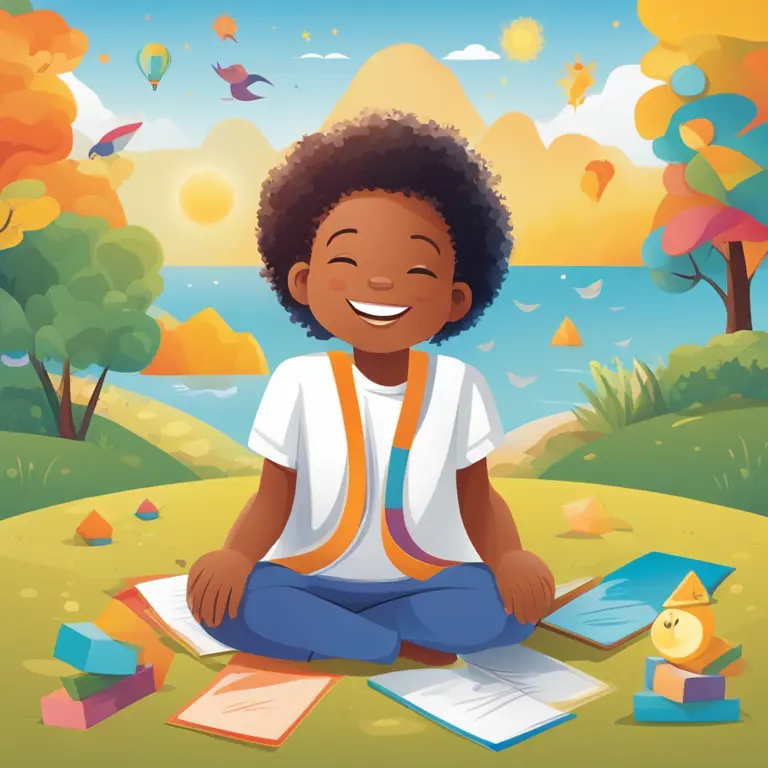
Calm Young Minds: Meditation Practices for Children
Discover the benefits of meditation for children and learn simple techniques to introduce mindfulness and relaxation into their daily routine.
article by Hina Kurosawa
Introduction to Meditation for Children
We often associate meditation with adults seeking tranquility and stress relief, but the practice is equally beneficial for children. Introducing meditation to children can help them develop coping skills for stress and anxiety, enhance their concentration, and foster a sense of inner peace. As we adapt to the changing dynamics of our world in 2024, mindfulness and meditation have become crucial tools for helping young minds navigate their emotions and experiences.

The Right Age to Start
Many parents wonder about the appropriate age to introduce their kids to meditation. While there's no strict age limit, typically children around the age of five begin to grasp meditation concepts. However, with the right approach, even preschoolers can engage in simple, play-based mindful exercises. Tailoring practices to be age-appropriate ensures that meditation is a fun and enriching experience for kids of all ages.

Benefits of Meditation for Youngsters
The advantages of meditation for youngsters are plentiful. It aids in managing stress and provides a natural way for children to learn self-regulation. Regular meditation can improve focus, which is particularly valuable in this era of digital distractions. It also contributes to better sleep, enhances creativity, and supports emotional development, enabling children to build strong relationships through increased empathy and understanding.

Creating a Supportive Environment
The key to successful meditation with children is creating a supportive environment. A dedicated quiet space free from interruptions establishes a routine and setting that children associate with mindfulness time. Incorporating meditation into the family's schedule can also encourage practice and establish it as a consistent habit. It's important for parents and caregivers to meditate alongside their children, providing a model for mindfulness that kids can mirror.
Simple Techniques to Get Started
There are several simple techniques tailored for children. Breathing exercises, such as balloon breathing—where kids imagine inflating a balloon with each deep breath—are easy to understand and practice. Guided visualizations can take children on imaginative journeys, helping them relax and tap into their creativity. For the tech-savvy child, numerous apps offer meditation and mindfulness exercises designed specifically for a younger audience.
Overcoming Potential Challenges
Introducing new habits can come with challenges. Children may initially resist meditation or find it difficult to sit still. It's essential to approach these challenges with patience and positivity. Short, engaging sessions that gradually increase in duration can ease children into the practice. Remember, the goal is not perfection but the consistent, gentle encouragement of mindfulness habits that will benefit children throughout their lives.
Meditation as a Growing Trend
In today's dynamic society, stressed and overstimulated children is a growing concern. As a result, meditation for kids is becoming a widespread trend, with schools incorporating mindfulness programs into their curriculum. By starting at home, parents can give their children a head start in personal development and emotional well-being—a gift that keeps on giving as they grow into balanced adults.
Published: 1/18/2024
Modified: 1/18/2024
More predictions
Come back here soon to learn more about yourself and your future


Mindfulness & Meditation: A Path to Inner Calm
Delve into our Mindfulness Meditation Program designed to guide you on a serene journey towards inner peace and clarity.


Your Mindfulness Meditation Journey Explored
Step into serenity with this primer on conducting mindfulness meditation, designed to align your spirit with the peaceful rhythm of being.


Unravelling Your Mindfulness Meditation Journey
Discover the steps to leading a successful mindfulness meditation session, enhancing emotional balance and tranquility.